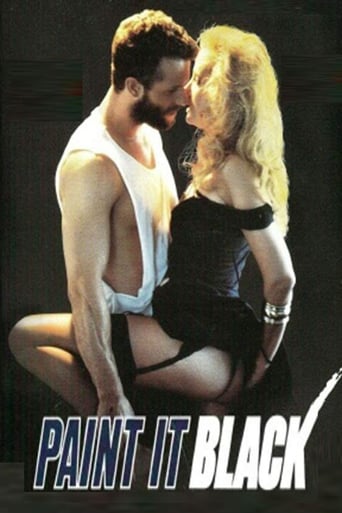CommentsXp
Best movie ever!
Merolliv
I really wanted to like this movie. I feel terribly cynical trashing it, and that's why I'm giving it a middling 5. Actually, I'm giving it a 5 because there were some superb performances.
Ariella Broughton
It is neither dumb nor smart enough to be fun, and spends way too much time with its boring human characters.
Jemima
It's a movie as timely as it is provocative and amazingly, for much of its running time, it is weirdly funny.
Latheman-9
It may help when viewing "Paint it Black" to bear in mind that director Tim Hunter is one of the world's leading experts on the films of Alfred Hictchcock, having taught classes on the subject while an instructor at the University of California at Santa Cruz in the '70s. I believe this film is Hunter's way of acknowledging Hitchcock's influence on his own directorial style, which lies somewhere between those of Brian De Palma and the Hitch himself. There are numerous elements in "Paint it Black" that are taken directly from Hitchcock films: a chance encounter with a sociopath who sees murder as a form of favor-granting ("Strangers on a Train" 1951), characters dangling precariously from a cliff face ("North by Northwest" 1959, and check out how one of them falls apropos this reference!), a female lead who is unsure of her paramour's intentions ("Suspicion" 1941), a slowly turned object revealing a wrenching surprise ("Psycho" 1960), prominently displayed scissors ("Dial M for Murder" 1954). And these are only the references that jumped out and screamed at me as I was watching the film. I'm sure a closer viewing would reveal many more. "Paint it Black" is fun viewing for any fan of Hitchcock's work, and on that basis is worth catching on video or TV.But as a film in and of itself, well that's another matter. Doug Savant and Sally Kirkland are fine as the 'disturbed young man' and venal art gallery owner, respectively. And Martin Landau is effective in his smaller role as an equally money-oriented gallery owner, as is Peter Frechette as the conflicted employee of Kirkland's character. The protagonist, however, is portrayed in an utterly leaden manner by Rick Rossovich; there is more animation in the beat up Volkswagen bus he drives. Julie Carmen as his love interest is eye candy, but adds little else to the film. The script is pedestrian and the editing sloppy, but Hunter does manage to work in some great shots in a few scenes. Clearly a low-budget film, the production values leave a lot to be desired, but one can only do so much if there isn't much cash to spread around.Highly recommended for Hitchcock lovers as a 'spot the reference' exercise, but otherwise a mediocre film. Rating: 5/10.
gridoon
For a movie that was never released theatrically, this turned out to be a better-than-expected little thriller, but still not good enough to get a wholehearted recommendation. The first half is the most intriguing, because it has an air of unpredictability and you don't know where the story will take you. But the second half eventually gets rather boring. Rick Rossovich, with his goofy smile and his ordinariness, is a likable hero, but the film is marred by overlength, and by the rambling script.
corvus-3
Pretty standard fare about a metal sculpturer who gets dragged into the murder of his unscrupulous, female art dealer. The psycho, nerdy killer gives the film its only watchable moments--suffocating the art dealer with a rubber shroud, and using channel locks on Gregory like a clip-on earring from Hell. The photography, script, acting, and lighting is strictly TV Movie of the Week send-up, giving the dark emotions, dysfunctional characters, and seedy situations a Beaver Cleaver patina. Our artist hero is a big, burly, and not too bright Fabio-type, so fortunately the writers bless him with favorable plot twists (girl hits his car, girl turns into lover, girl just happens to be daughter to biggest gallery owner in Santa Barbara). The killer's psychosis is explained in one scene with his overbearing mother and something about moving brain plates, covering both the psychological and physiological in one, quick swoop. His wanna-be-an-artist-wah! motivations are even more obscure--something about hoarding art so the rich, tasteless dummies won't despoil its purity. Looking out of this film, he doesn't have to worry about anything remotely resembling Art.

